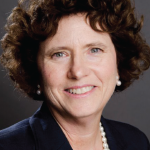Happiest of All Specialties
A recent poll revealed that rheumatology is the happiest of all specialties.1 Why would this be? It certainly is not related to compensation. In fact, in 1992, M.J. Prashker documented by economic analysis that choosing to train in rheumatology was a poor financial decision with a lifetime net loss when including time spent in fellowship in the equation.2
The appealing aspects of rheumatology are multiple: the opportunity to experience long-term relationships with patients, the challenge of dealing with a set of conditions with an unknown etiology, the use of history and physical examination as the cornerstone of practice, the experience of dealing with variability and uncertainty, and a way of life that is demanding yet compatible with a fulfilling personal and family life.
Rheumatologists tend to be satisfied in the role of a guide or counselor, rather than as a heroic interventionist. Few immediate successes or cures occur in the practice of rheumatology, and immediate gratification for either the patient or the physician is rarely seen.
With the exception of a joint aspiration and injection or the initial use of prednisone in polymyalgia rheumatica, the patient will rarely experience an immediate benefit following the first visit and, thus, attribute it to the physician’s skill. Our most effective interventions have a delayed onset of action.
The goal of the initial visit should always focus on the creation of a trusting relationship, education regarding the condition affecting the patient and plans for dealing with it. This concept of immediate vs. delayed success became obvious to me in my first few months of practice. Mr. R presented with the onset, one month previously, of severe polyarticular rheumatoid arthritis, which began while he was vacationing in Florida. He was a pleasant, late middle-aged man, somewhat unpolished in manner, who had created a successful business manufacturing furniture. He described his encounter with a physician in Florida who aspirated and injected his knee with corticosteroids as follows: “I thought I had died and gone to heaven! Terrific! The next day I had a sofa delivered to his home.”
At this time, I had just finished my fellowship; we had bought our first house and had three children. My wife and I slept on a mattress on the floor and the only sofa in the house was a futon. I immediately called home.
“Forget any thought of buying furniture now. If this patient remits on gold [the cornerstone of therapy at that time], we could furnish the whole house! Let’s see what happens.”
Gradually, over the next few months, he went into a clinical remission, and although he remained a loyal and grateful patient for several decades, my reward that first year was a bottle of Scotch at Christmas.
An axiom in our practice is that the appearance of a box of homemade cookies in the workroom, donated by a grateful patient, is virtually pathognomonic of the recent initiation of prednisone for polymyalgia rheumatica.
The practice of rheumatology encompasses all of the fundamental skills and principles inherent in internal medicine in addition to an understanding of the essentials of orthopedics. However, several features are unique to the conditions most commonly managed, the systemic rheumatic diseases. Most of these disorders are of unknown etiology and follow a variable course over time. Inflammation is a potentially reversible process, sometimes with the possibility of a spontaneous remission.
Over the years, it has been my observation that at any follow-up visit, unrelated to the intervention employed, the presentation of one-third of patients with rheumatoid arthritis or other rheumatic condition will be improved by objective criteria, one-third will be worse, and one-third will be the same. Given the chronic optimism of most patients, over one-half will report improvement, one-quarter will feel worse and one-quarter will state they are the same. It is not unique to have a patient who, over the years, always tells you they are better and, rarely, those who invariably state they are worse.
Therefore, to be effective as a rheumatologist you must achieve better than a 50% success rate.

